A 10-hour flight to leap from an hemisphere to the other. I fall asleep in London and I wake up in the Nelson Mandela's country. As the plane goes up to the airstrip, a stack of corrugated iron and twisted wood shape a makeshift city. Shanty towns stretch out over hectares and reflect the image of a sad reality ; the stakes of a country who, clearing away the evil spirit of Apartheid must bustle about filling the disparities between two universes – the opulence one and the need one – who justapose without looking at each other nor confront one another.
The recent events causing the flight of herds of Zimbabwean immigrants don't put my mind at rest while I put the foot down on the African ground. I disembark in a small airport – Welcome to Cape Town. I load my bag, take some information from the tourist office before hopping on a collective taxi that drops me off by the guesthouse where I have an appointment with my brother and his friend Ronan.
We hire an Opel Corsa that will acompagny us throughout our African odyssey. And our first outing has a still mythic name for generations of navigators and explorers : the cape of good hope. Vasco de Gama was the first one to open the maritime way to the Indian subcontinent skirting around Africa and, not far from the rocky promontory, a cruce has been erected in tribute to the great navigator he was. Along the road, small seaports brighten up the ride. Winds and bad weather are the everyday life of the intrepid sailors who lives here.
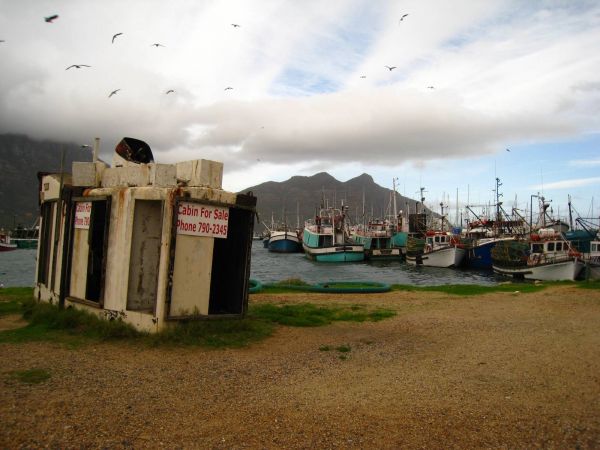
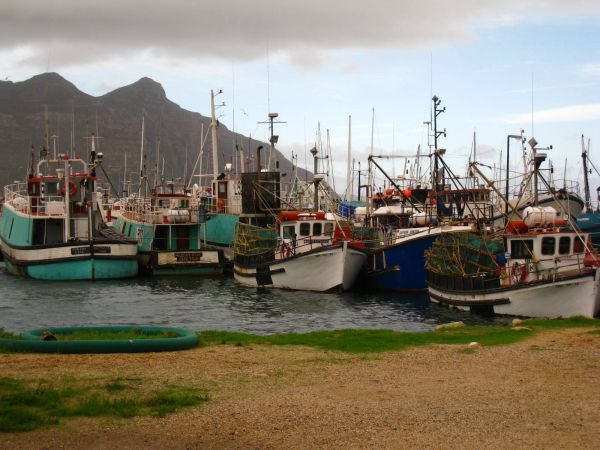
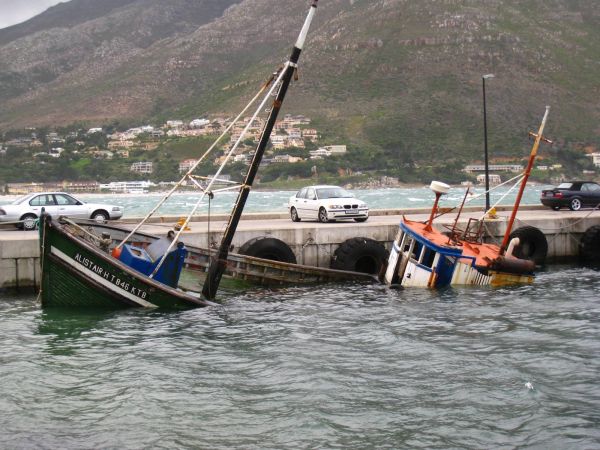
Our road stops at the end of the peninsula. Welcome to Cape point, a jagged lighthouse-topped hillock. A cable-car saves the laziest people walking uphill. Beyond the luminous marker, millions of cubic meters of water separate us from Antartica, the white continent.
On the right side, about one hundred meter away from Cape point, the foam runs aground the cape of good hope. And for the sailors, the ending sign of heading south. Bear to port! Still a few miles and the sailing northwards the African continent will be started. The cap of good hope is not the southernmost point of Africa since it was supplanted by the Agulhas cape but it's far more representative in the change of heading that the boat took and keep on taking.
The wind pulls our last remaining hair out but the view of the breathtaking cliffs of Cape point is worth struggling few minutes against Eole.
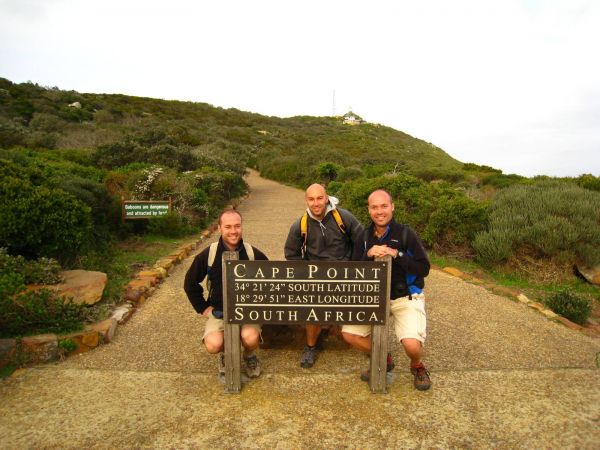
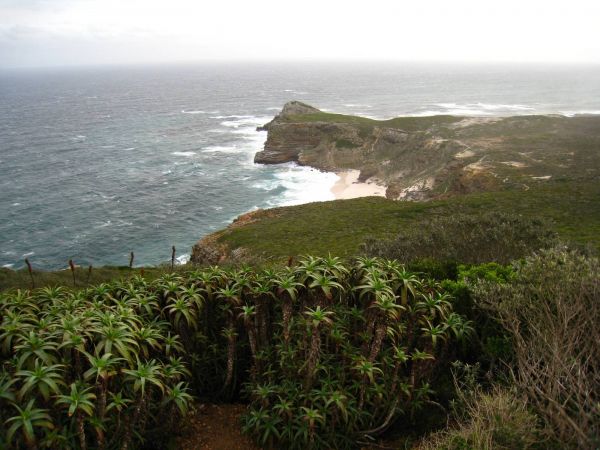
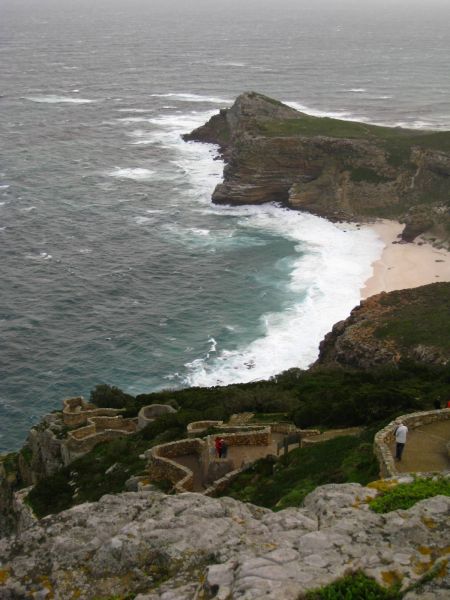
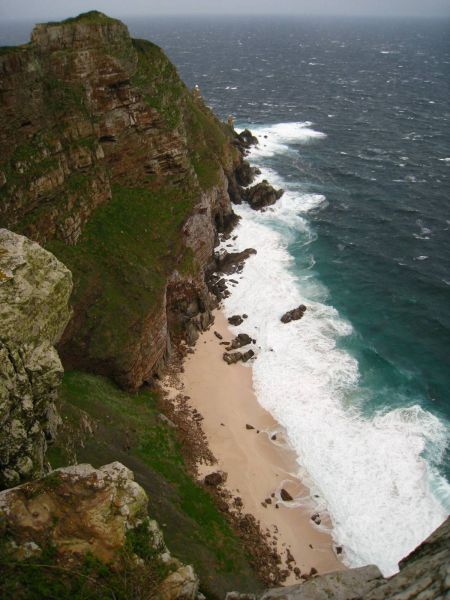
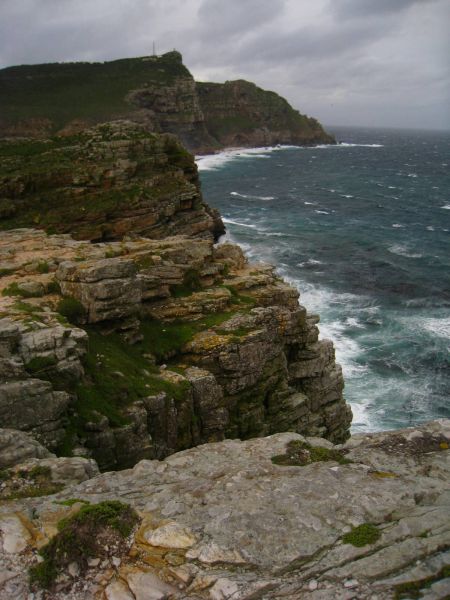
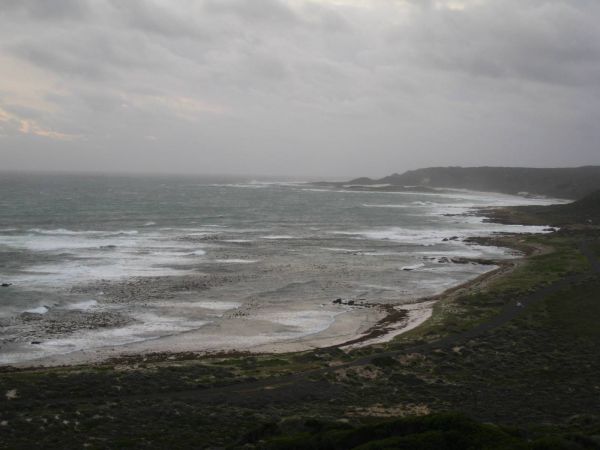
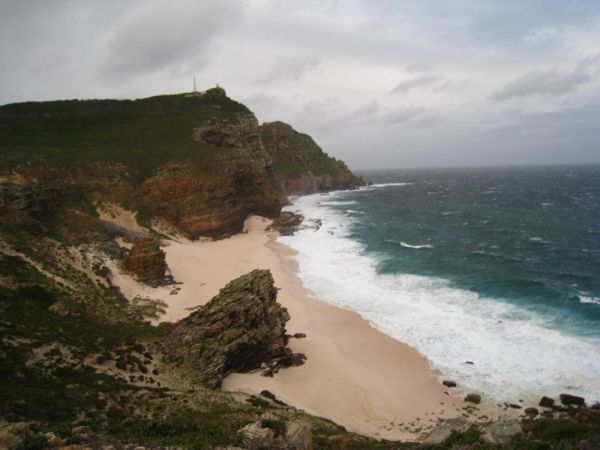
On the way back, we make a short break at Boulders beach where few families of penguins settled. Uneasy to near them. So we sit down and delight in these moments.
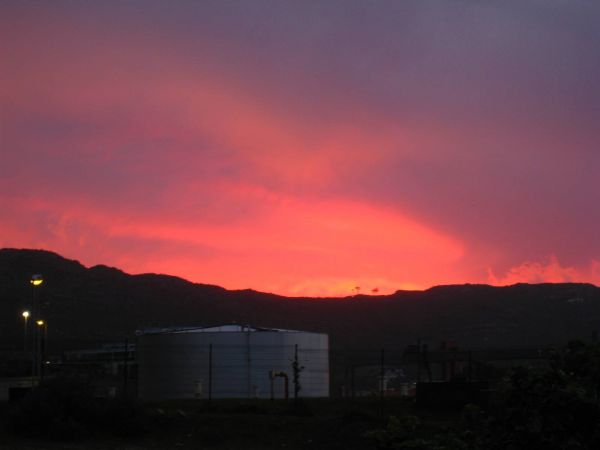
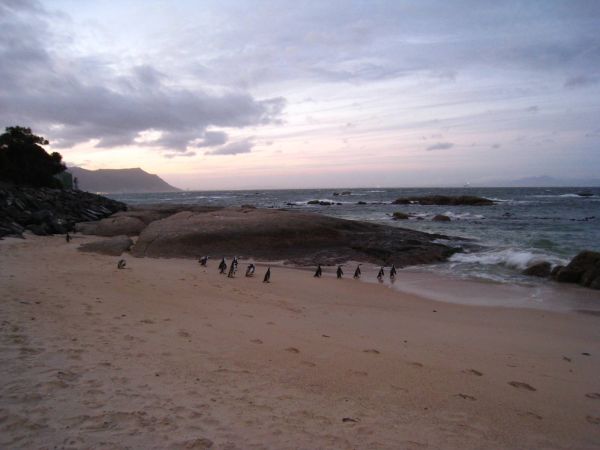
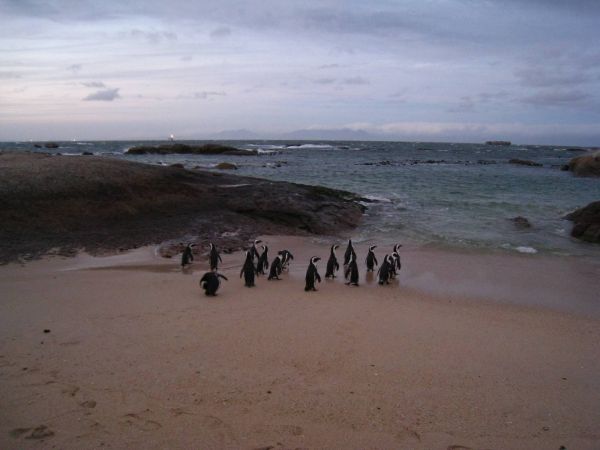

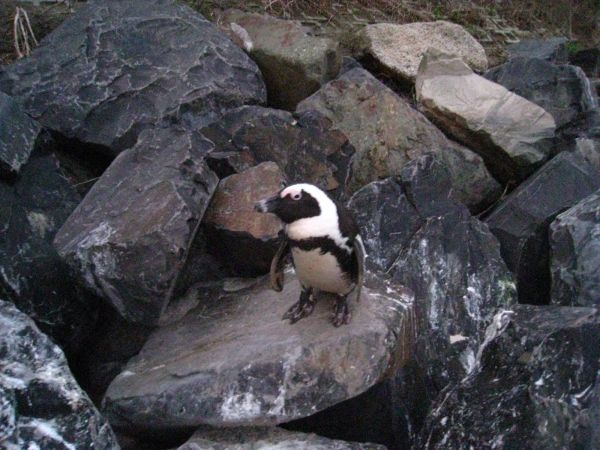
In the evening, we chat with Zimbabweans, Congolese and South-africans who, despite the political tension in their respective countries share a certain joie de vivre. The first day of my round-the-world trip ends, far from the apprehension I had this morning as I arrived... A day which starts a 2-month African adventure between deserts, safaris, meetings and a laidback way of life only Africa can offer.
Keyword - departure -
Monday 16 June 2008
From a cape to another one
By dorian on Monday 16 June 2008, 16:08 - RTW2-South Africa
Sunday 16 September 2007
First steps in Delhi
By dorian on Sunday 16 September 2007, 19:02 - RTW-India
I leave Nepal to embark on the Indian adventure. Only 15 days spent in this magical country, but the departure is heartrending. Flight from Kathmandu to Delhi. I experience a dual feeling as I get off the plane. An overwhelming desire to discover this country-continent and a deep reluctance fed by the numerous divergent opinions I gleaned so far. India, we love or we hate but we can't stay indifferent. I'll know more in one month.
Religiously or culturally rich, the country is a patchwork of imposing monuments, dynamic and warm-hearted people nodding the head to give their agreement and wonderful landscapes. "Incredible India" the billboards hammer out. I don't know where to start the trip from : following the Ganges eastward to reach the sacred city of Varanasi and perhaps extend to Calcutta and the Sikkim state ; heading northward for a bit of coolness at the foothills of the Himalaya and dipping into the buddhist fervour in Dharamsala, dalai lama's resting place ; going by the jewels of the Rajasthan westward and getting to the Punjab, country of the sikhs or, drifting southward to finish on a heavenly beach next to Goa, the former Portuguese protectorate.
The heavy religious differences keep the look on. The sikhs' turbans frequent the muslim djellabahs, the shaved-headed Buddhist monks and the Hindu tikkas while jainists dust a bench before sitting. As I get out the airport shuttle-bus, the night has fallen. I meet a German that leads me to a cosy guesthouse in the Paharganj district. En route, the first pictures of poverty and dirtiness. Lots of beggars, invalids and disabled persons strew the streets without having another place to sleep. Pestilential smells shake me. Rats dig the garbage areas and the horns of the rickshaws get through the traffic jam. The German relates me his ending trip in India when I'm in a hurry my Canadian friend arrives because 2 are not too much to cheer up one another.
More than 2 years we haven't seen at each other, and Alain shares this desire and this reluctance to discover India. We walk to visit the red fort I hardly appreciate. I didn't digest my first meal in India...

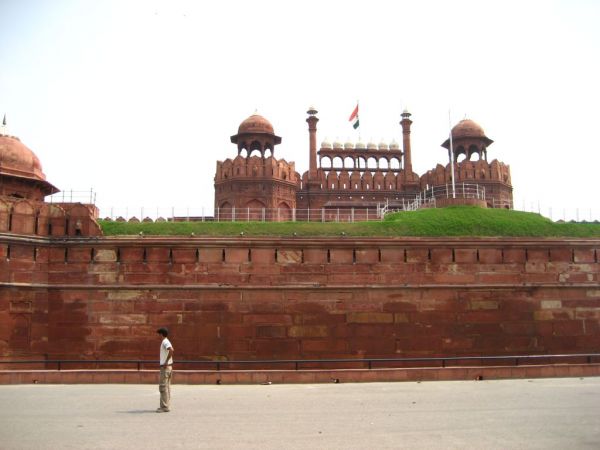
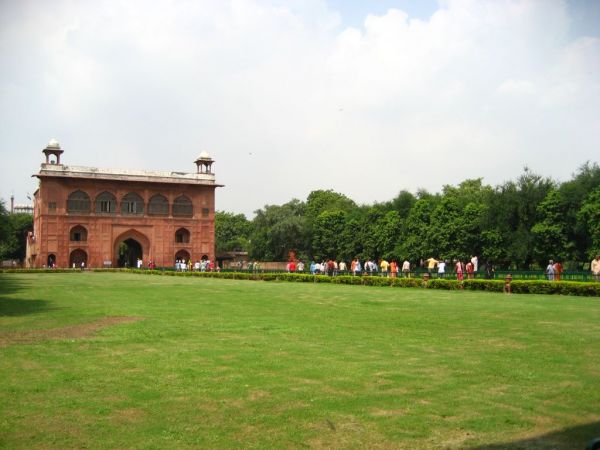
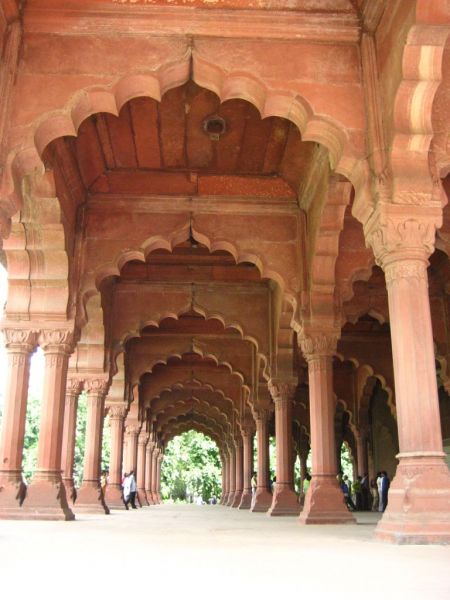
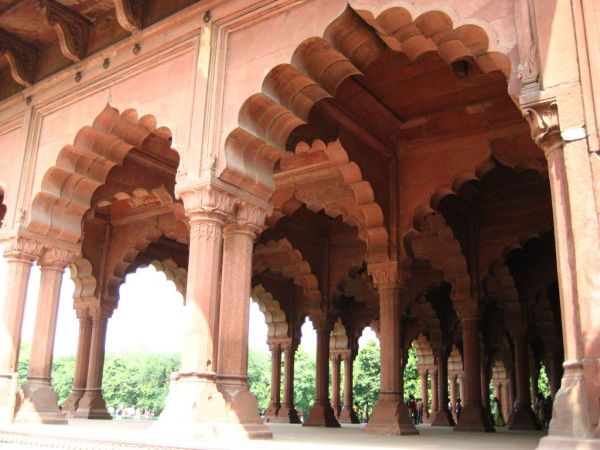
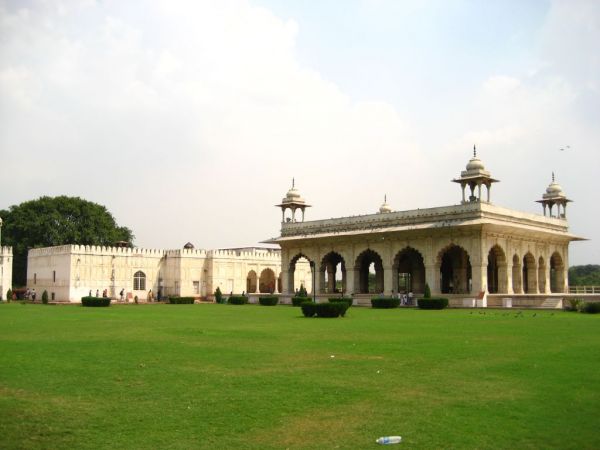
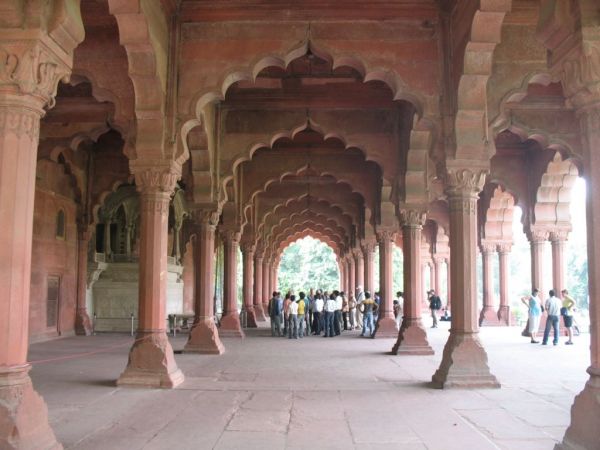
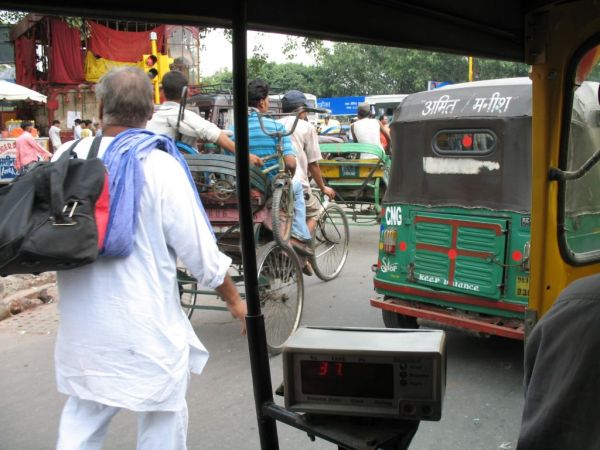
We decide to leave Delhi by the morning train to Shimla, in the northeastern Himachal Pradesh state. A necessary exile. Searching for a bit of coolness and serenity, a more rural India. Our spirit isn't enough well-prepared to accept the contrasts of Delhi despite the hospitality and the kindness of the Indians.
Tuesday 28 August 2007
Transition in Hong Kong
By dorian on Tuesday 28 August 2007, 22:13 - RTW-China
It's time to assess this beautiful loop in China. A wonderful trip I can't summarize in a few words. Not everything was easy during this trip and some topics leave us wondering less than one year before the Olympic Games. The tourist who wishes to travel on his own will bump into several problems. The language barrier is the main one. At the restaurant, at the hotel or to move around despite the very good rail and road networks. Except the main cities and touristy spots, it's very hard to find someone who speaks the Shakespeare's language. I also point out : don't expect to find English signs in the bus or train stations. Another misunderstanding must be credited to some hotels which don't accept foreigners. Another difficulty turns out to be the cash withdrawal in all the cities but Shanghai, Beijing and the touristy spots. The ATM don't accept international credit cards (except for the Bank of China, although not always). And the counter clerks will stay puzzled while they stare at your card.
On the other hand, the remote hinterlands offer some genuine Chinese lures and a unique opportunity to live the country in its "original version". Learning basic Chinese and speaking in a so different language brings as much pleasure as discovering the natural gems of the country, its sacred mountains, the temples and its traditions. And these small worries look insignificant in comparison with the whirlpool of sensations the country brings.
Leaving Beijing, I have a change of scenery and head towards Nepal. A welcome change after one month spent with my family in the Mao's country. A part of the trip ends and a new one remains to be written onto the Himalayan heights. The transition goes off smoothly since my connection flight in Hong Kong leaves me enough time to visit the former British colony. The United Kingdom handed over the control of the protectorate to the Chinese government, 10 years ago. From this rich past and from its thriving present converges a subtle blend of Londoner trams, American fast-foods and Asian souls. In fact, Hong Kong is an island and a small part of the Hong Kong province that enjoys a relative autonomy. Chinese visa is not necessary to come here. Opposite the island, about a few hundreds meter away, there's the Kowloon district we can reach by boat or by metro. The town is definitely cosmopolitan, more in term of represented nationalities than type of workers, mainly tuxedo-clad businessmen.
The northern part of the Hong Kong island harbours a concentration of the tallest towers in the world. Down the towers, roads looks like tiny alleyways in comparison with giant-size skyscrapers. My urban walk is short but this city deserves to be known and remains a urban paradise for a lot of people wishing a renew in their professional career.
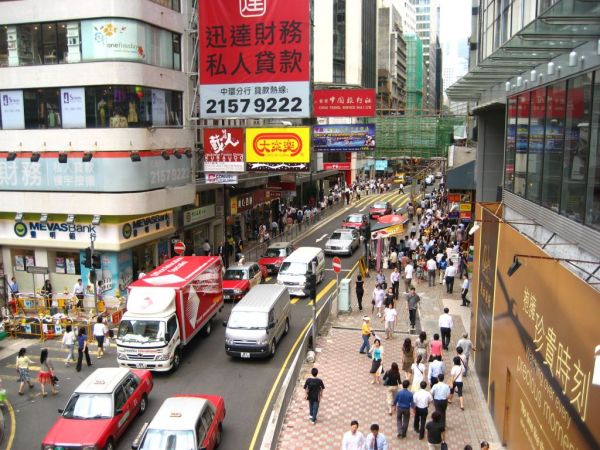






I take again the shuttle train and head for the airport before taking a plane to Delhi, then a new connection flight to Kathmandu after sleeping several hours at the transit area of the Delhi airport.
« previous entries - page 2 of 3 - next entries »






 visits
visits